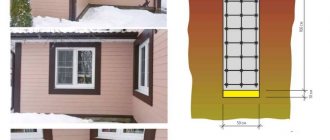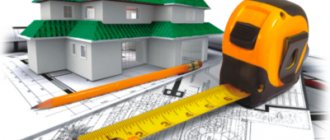In the modern world, it has become popular to purchase real estate on the 1st floor of residential buildings with its subsequent conversion into a commercial enterprise. There are also often situations when owners of commercial organizations want to convert their property into the status of a residential building. All features of such processes are prescribed in the Housing Code of the Russian Federation.
Definition, differences and directions of premises
According to Article 15 and Article 16 of the Housing Code of the Russian Federation, real estate has the following definitions:
- Residential real estate - private or apartment buildings. They are suitable for permanent residence and are also in state, municipal or private ownership of both individuals and legal entities.
- Commercial real estate is a variety of buildings or parts thereof that are used for permanent profit or commercial income.
Warning
The purpose of operating a building is to use it for its intended purpose: residential - for permanent residence, and commercial - for profit.
The main forms of difference are:
- impossibility of permanent residence in a commercial premises due to its belonging to a non-residential property;
- narrow investment direction in commercial real estate;
- payback of commercial real estate, which on average takes from 5 to 7 years;
- the purchase of commercial premises is a rather rare occurrence. Today, it is more common to rent such property.
Improper use of real estate
It is important to know that the purposeful use of residential premises as commercial premises, or vice versa, is a violation of the law.
An exception to this rule is when an individual entrepreneur engages in professional activities, for example, tutoring, legal practice, and the like. But to carry out these actions, a number of rules must be taken into account:
- there is no violation of the interests and rights of other residents;
- the entrepreneur complies with fire, sanitary and hygienic safety requirements, does not violate the rules for using the residential area and similar conditions;
- the entrepreneur does not carry out production activities.
We are converting an apartment from residential to non-residential
Owners of apartments located on the ground floors of buildings with windows overlooking busy streets can use their property to organize small businesses.
But, before opening a store or hairdresser in an apartment, it is necessary to remove this premises from the housing stock. In this article we will look in detail at what needs to be done for this.
Performing apartment redevelopment
If it is necessary to carry out work on the redevelopment of residential property, a document confirming a change in the category of property becomes the basis for starting their implementation.
Upon completion of these works, acceptance is carried out by a commission formed by the body that carries out the transfer of real estate from residential to non-residential.
The commission draws up an act confirming the completion of all necessary work on the redevelopment of the residential premises, which allows its further operation as non-residential property.
Registration of ownership
After transferring real estate from the residential to non-residential category, it is necessary to re-secure ownership. A document confirming a change in the status of the living space is the basis for state registration of ownership of the premises.
What kind of business is allowed to be conducted in an apartment building?
The use of non-residential property located in a building where citizens live is allowed to open:
- store;
- hotels;
- office;
- sewing studio or any other workshop;
- private kindergarten;
- cafes and other businesses.
The following cannot be placed in an apartment building:
- dry cleaning;
- bath;
- public toilet;
- funeral service;
- dish collection point;
- and other objects, the list of which is specified in SNiP.
- Results
After reading this material, we can summarize - removing real estate from residential status is a long and very costly process, requiring a large number of approvals and documents. In addition to this, the owner needs to make a porch so that clients enter the premises from the street, and not through the entrance, and carry out redevelopment inside the apartment.
According to the experience of entrepreneurs, the entire process of transferring premises can take from three months to six months. To speed it up, a novice entrepreneur can contact a real estate agency to receive assistance with registration and advice from specialists.
We are converting an apartment from residential to non-residential Link to main publication
Source: https://okommunalke.ru/voprosy/vyvodim-kvartiru-iz-zhilogo-fonda-v-nezhiloj
Causes and consequences caused by non-compliance with the law
Residential premises are intended only for residence by owners, members of their families or tenants. Failure to comply with the lawful use of premises can have a number of consequences. Namely:
- fine;
- in case of misuse of residential premises by the owner and violation of the rights of other residents, the owner of the property may be deprived of all rights to own real estate;
- If a legal entity violates the rules regarding the maintenance and transfer of residential premises to commercial premises, a fine is provided.
- when people permanently reside in non-residential premises, an administrative fine is provided for non-compliance with sanitary and epidemiological requirements.
The fine may be as follows:
- To a legal entity in the amount of 10-20 thousand rubles or suspension of its activities for a period of 90 days.
- For an individual entrepreneur in the amount of 1-2 thousand or forced suspension of activities for 3 months;
- For an individual in the amount of 500 to 1000 rubles.
What premises can be converted into non-residential buildings?
The main requirement for the premises is the mandatory presence of a separate entrance. If its area exceeds one hundred square meters, you will need to equip a back exit. The law prohibits entering non-residential premises through a regular front door. The owner of the premises will have to carry out redevelopment at his own expense.
- It is possible to transfer only an integral object to non-residential stock.
- If residents are registered or living in the apartment, they should first be registered at the passport office of the organization that services your home.
- In cases of arrest or bail, refusal is guaranteed.
- The easiest way will be for the owner of a home located on the ground floor of a multi-storey building. If the object is located on the second or third floor, then all underlying premises must be non-residential.
- Legislation prevents transfers in houses that have the status of rental for social services. use.
The law prohibits changing the current status of apartments in buildings recognized by the commission as unsafe. The premises must be equipped with functioning communication equipment. Owners of apartments in high-rise buildings classified as historical objects will have to face serious problems. Typically, old houses are often of historical value.
The current Housing Code of the Russian Federation states that it is possible to conduct business in an ordinary apartment only if it does not interfere with the residents living next door. And also strictly comply with sanitary, hygienic, fire and other standards.
Conversion of residential premises into commercial real estate
The transfer of residential premises to commercial real estate is accompanied by a number of mandatory conditions:
- The location of the apartment is on the 1st floor of the building. When locating an object of the above level, it is necessary to confirm that all the premises below belong to the non-residential stock.
- The entire area of the object is translated, and not just any individual part of it.
- Availability of a separate entrance to the premises.
- If the room size exceeds 100 sq. m., it is necessary to have an emergency exit.
- The premises must not have any encumbrances or be seized.
- Accidents, reconstruction, major repairs, etc. prevent the transition of an object from one status to another.
- All persons registered in the apartment must be discharged from it.
- The layout of the premises must comply with the law.
Getting permission
To obtain permission, the owner must contact the local government department or the MFC. The application is accompanied by an application and a full package of required documentation.
The collection of documents can be carried out either by the owner himself or by his authorized representative. The list of documentation consists of:
- property rights document;
- passport;
- floor plan and explication;
- technical passport of the premises;
- a certificate from the housing department, which contains information about other premises located on this floor;
- consent of the remaining owners of apartments in this building;
- conclusion of fire safety supervision, which must confirm the compliance of the property with fire requirements;
- conclusion of the sanitary-epidemiological service;
- technical report issued by the management company;
- an extract from the house register confirming the absence of persons registered in the premises;
- a project developed for the refurbishment of a premises.
Information!
After submitting a complete package of documentation, its review takes about 45 days, then a decision is made. On average, the process of transferring the status of a residential property can take about six months.
Refusal to transfer status
The reasons for refusing to convert residential real estate to commercial may be the following factors:
- the extract from the house register is incorrect, someone else is listed as registered at the specified address;
- there is no possibility of a separate entrance;
- the building is subject to major repairs, reconstruction or demolition;
- negative decision of the council of house owners;
- non-compliance with fire and sanitary standards.
Cost of the procedure
The cost of services varies depending on the individual characteristics of each case. On average, each payment is equal to:
- redevelopment project – from 1000 rubles. for 1 sq. m.;
- floor plan - from 1200 rubles;
- those. passport and plan – from 900 rubles;
- state duty – 350 rubles;
- assistance from a notary office – from 700 rubles.
Transfer of premises from residential to non-residential
In case of a positive decision, a corresponding order of the mayor is issued, on the basis of which the entrepreneur is notified of the decision made - according to legislative norms, 45 days are allotted for this procedure. Three more days are provided for notification of owners of premises adjacent to the property in question.
Despite the possibility of additional benefits for the seller of an apartment when transferring the property from residential to non-residential, withdrawal from residential
and the subsequent sale of the property is not as common a scheme as it might seem at first glance.
Why? The withdrawal from the housing stock
is still a complex and rather lengthy process, requiring professional knowledge, investment of funds and time-consuming. In addition, an apartment transferred to the category of non-residential premises sharply narrows the circle of possible buyers. It should also be taken into account that for premises converted from residential to non-residential, different electricity prices apply. Therefore, in practice, most often we are dealing with a situation where a residential apartment is purchased with the aim of further removing it from the housing stock by the new owner. It is likely that the entrepreneur will need to redesign the premises so that it best suits the assigned tasks; the changes made can be simultaneously agreed upon when preparing documents for the removal of the premises from the housing stock.
Withdrawal from housing stock in Novosibirsk
What you get when you contact: - You will find out the exact price for removing your premises from the housing stock.
— You receive advice from qualified lawyers regarding the transaction.
— Our specialists solve all complex issues with the design of the premises for you.
Documents required for the removal of premises from the housing stock To transfer residential premises to non-residential premises, the owner of this premises is obliged to provide the following package of documents to the local government body: - Application for transfer of premises, indicating the profile of the future non-residential premises; - Title documents for the transferred premises; - Plan the premises being transferred with its technical description (technical passport of the residential premises); - Floor plan of the house in which the premises being transferred is located.
If the owner envisages carrying out redevelopment, redevelopment or other work necessary to use the premises as non-residential, before contacting the housing committee of the mayor's office, he must prepare a working draft for the redevelopment and (or) redevelopment of the transferred premises, prepared and executed in the prescribed manner .
Also read: When can noisy work be carried out in Moscow?
Conversion of non-residential premises into residential premises: is it possible?
In addition, there is still Art. 8 LCD
. This rule, although not directly, provides for other situations when the owner is given the opportunity to convert residential premises into non-residential ones.
Thus, in particular, it is provided that the transfer of residential buildings and premises suitable for habitation to non-residential ones is, as a rule, not allowed
.
In exceptional cases
The transfer of residential buildings and residential premises to non-residential ones can be carried out
by decision of the relevant bodies of local councils
.
However, what exactly is meant by exceptional cases
,
LCD
does not specify. The procedure for such a transfer is not explained.
Therefore, in each individual region of our state, the relevant local government bodies have taken upon themselves the function of adopting local regulations regulating this issue. And such acts have already been in force for several years in the reporting territories.
So, in particular, we all know for sure that the residential complex only provides for cases of transfer of residential premises to non-residential
(
Article 7 of the LC
).
This is possible subject to his recognition as unfit
for residence.
For this purpose, in particular, periodic inspections of the condition of residential buildings are carried out within a set period of time.
Residential houses and premises unsuitable for habitation are converted for use for other purposes or such houses are demolished by decision of the executive committee of the relevant local council.
The determination of suitability or unsuitability is carried out in accordance with the requirements of Resolution No. 189, which is still in force.
This is a rather outdated legal act, which is almost never used in its original edition.
Transfer of real estate to housing stock
To transfer a property from non-residential to residential, it must meet the following requirements:
- insulation of the room, the presence of window and door openings;
- availability of heating, sewerage, water supply, electricity and main walls;
- compliance with the standards established for residential premises.
Submitting an appeal
An application for transfer should be submitted to an interdepartmental commission, which will make a decision regarding the application. The application is accompanied by a list of documents:
- passport;
- documents confirming ownership of property;
- redevelopment project;
- conclusion of all authorities;
- floor plan, explication and plan with description;
- legal entities will also need constituent documents.
Deadline for receiving a decision
Waiting for a decision to be made also takes about 45 days. The interdepartmental commission issues a protocol indicating their consent to the transfer of real estate or refusal.
Failure may be caused by the following:
- restrictions on the right of disposal;
- unsuitability for habitation;
- lack of engineering networks and infrastructure;
- location of the object relative to the city limits.
Requirements that apply to real estate in order to remove it from the housing stock
Before transferring a residential premises to the non-residential category, you need to make sure whether it meets the following requirements:
- There should be no registered citizens in the premises.
- The real estate must have a single owner, and only he can handle the transfer procedure.
- The premises cannot be located above a residential apartment.
- It is prohibited to convert living space into non-residential space in houses that are subject to demolition or are in disrepair.
- It is possible to equip a separate entrance from the street.
- The apartment cannot be mortgaged or purchased with a mortgage; in the second case, the written consent of the lender's bank is required.
Important! If the property meets all of the above requirements, the owner can remove it from the housing stock.
The procedure for transferring real estate from the housing stock:
- Collect a set of documents necessary for the removal of living space from the housing stock.
- Apply to the government agency responsible for changing the status of the premises.
- After receiving notification of the approval of the withdrawal procedure, begin work on redevelopment of the housing.
- Present the redevelopment work and sign the certificate of compliance.
- Issue a certificate that confirms ownership of the premises.
Next, we will analyze in detail each item we have listed.
Collection of necessary documents
List of documents required to change the status of the transferred premises:
- application for changing the status of real estate;
- certificate of ownership of the apartment;
- a floor plan of the premises in the building, with mandatory indication of neighboring apartments in the building and a cadastral passport (provided by the BTI);
- a project for redevelopment of housing into a commercial facility, which must include solutions for creating a separate entrance.
Contents of the application for transfer of premises:
- FULL NAME. the applicant;
- the applicant's registration address and contact information;
- FULL NAME. owner of the apartment and details of the document confirming ownership;
- information confirming that citizens are not registered in the premises;
- residential address;
- the purpose of transferring real estate to non-residential stock;
- a description of the redevelopment work, if it is required to remove the apartment from the housing stock;
- list of attached documents.
- Contacting a government agency
After preparing a set of documents, the applicant contacts the local administration, where the citizen is given a receipt indicating the date and list of documents submitted. The law sets aside 45 days, during which the public service making a decision on this issue must issue a conclusion with consent or refusal to assign the property non-residential status.
It is important to know! Representatives of the local government body are required to inform the owner of the premises about the decision made within 3 working days. The authority carrying out the transfer of premises issues the applicant a document confirming the decision and informs about this, including the owners of neighboring apartments.
The refusal must be justified and based on the requirements of the Housing Code (LC) of the Russian Federation. If all documents comply with the law, and the redevelopment does not lead to a loss of strength and stability of the building, failure will not follow. Violation of the deadlines for consideration and making demands not specified in the LC may be grounds for filing an application with the court.
Cost of services
The total cost of transferring property is about 200,000 rubles, but it varies depending on the individual characteristics of each property. The most expensive of the entire list is the plan.
Attention!
It is impossible to simply cancel the transfer of an object's status. To cancel the commission's decision, you must go through the entire procedure again.
The period of converting commercial property into residential property and vice versa takes a lot of time and money.
Therefore, before starting the process, you should think carefully about everything and consider it from all sides. If, nevertheless, the owner is ready to go through all the procedures, he has a long journey ahead, which requires patience and the availability of a reserve of funds. Share:
How to convert residential property into commercial property: basic conditions
Finally, we got to the most popular, so to speak, problem. It is the permission of the owners of apartments in the household that can become the stumbling block, due to which the plan to transfer the existing apartment to commercial premises will remain a plan.
We do not deny that such cases occur, but there is a more rational approach to this process. The vast majority of transfer refusals are due to the peculiarities of the building structure of the house. Those. redevelopment cannot be carried out, because this may damage the load-bearing elements, which will certainly have a detrimental effect on the position of the entire house. So, such questions should be clarified either with the administration (which will take time), or you can order this service from the design bureau that will develop the project. With the second option, you will save significant time, but spend a little more money.
Is it possible to convert non-residential premises into residential ones?
It is worth knowing that until you have completed all the necessary papers, remodeled, repaired and converted the non-residential building into residential, living in it is strictly prohibited by law. That is why it is worth trying and coping with difficulties as quickly as possible. Moreover, the lawyers of the site “o-nedvizhke.ru” are ready to come to your aid at any time of the day or night.
How can you turn a non-residential space into a residential one? This simple question can sometimes cause heated disputes and take a lot of time to complete the necessary documentation. In this article, let's look in detail at the procedure for converting non-residential premises into residential ones, and also talk about why to do this at all.
26 Jun 2020 glavurist 328
Share this post
- Related Posts
- How to Discharge a Person from an Apartment If He is in Prison
- Submission of reports in 2020 table
- Traffic rules for driving around roundabouts
- What to do if your upstairs neighbors drown you
Conversion of commercial real estate to residential: rules and controversial issues
Residential standards for people (which include safety requirements: sanitary, fire and others) are much stricter for this type of housing. The list of requirements for refurbishment is quite extensive - and sometimes it is easier to sell existing real estate in the status in which it is, and invest the proceeds as needed .
- Premises isolation – the property must be separated by partitions.
- The presence of a zoned residential area and developed infrastructure.
- Integrity of load-bearing structures (no deformations, other changes, cracks).
- Eliminating the risk of injury - this applies to both the internal condition and the surrounding area of the premises.
- Availability of necessary utilities (water supply, ventilation, heat exchange network, electricity, sewerage and others) and their strict compliance with sanitary requirements.
- Protection against water penetration and leaks.









